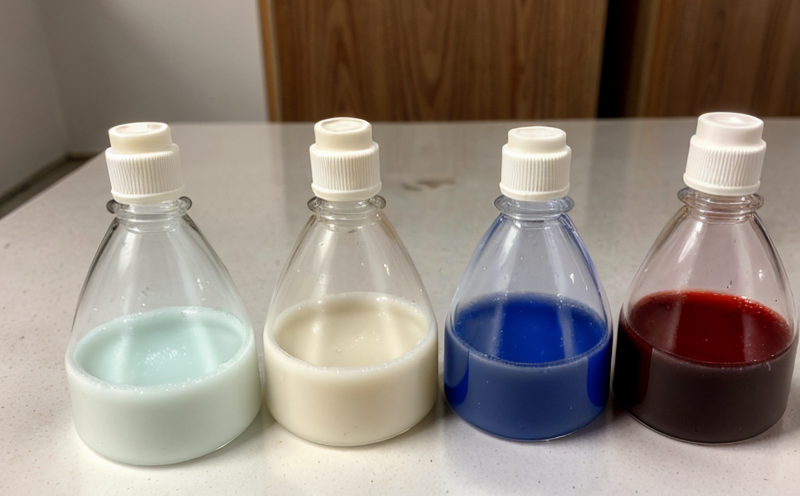Leather Monomer Testing
Leather monomer testing is a critical process in ensuring that materials used in leather production are free from harmful substances. This service involves the detailed analysis of chemical compounds present in raw and processed leathers to identify any potentially hazardous monomers or oligomers. The primary goal is to safeguard human health, comply with environmental regulations, and ensure product quality.
Monomers and oligomers can be introduced into leather during various stages of processing, including tanning, dyeing, and finishing. These compounds are often used as additives for their functional properties such as improving flexibility, reducing shrinkage, or enhancing color retention. However, certain monomers like formaldehyde or certain aromatic amines can pose risks if not properly managed.
In the leather industry, it is essential to have a robust testing protocol in place to monitor these substances throughout the supply chain. This ensures that end products meet stringent safety standards and regulatory requirements. Leather monomer testing typically involves several steps, including sample preparation, chemical analysis using advanced instrumentation, and interpretation of results against relevant international standards.
The process begins with collecting representative samples from different stages of leather production. These samples are then prepared according to the specified methods outlined in ISO 17025-accredited laboratories. Once prepared, they undergo testing using various analytical techniques such as gas chromatography-mass spectrometry (GC-MS), high-performance liquid chromatography (HPLC), and Fourier transform infrared spectroscopy (FTIR).
One of the key challenges in leather monomer testing lies in ensuring accurate identification and quantification of low concentrations of these compounds. Advanced instrumentation plays a crucial role here, allowing laboratories to detect even trace amounts of potentially harmful substances. The selection of appropriate standards is also vital; for example, ISO 17025 ensures laboratory proficiency while other relevant standards like ASTM D4896 help specify procedures.
Another important aspect of leather monomer testing is understanding the potential risks associated with different types of monomers and oligomers. For instance, formaldehyde can cause irritation to the skin and respiratory system if exposed in high concentrations. Similarly, certain aromatic amines used as curing agents have been linked to cancer according to IARC classifications. Therefore, knowing which compounds are present helps manufacturers make informed decisions about raw material selection and processing methods.
Compliance with international standards is crucial for maintaining quality and reputation within the leather industry. Compliance not only protects consumers but also enhances brand image by demonstrating commitment to safety and sustainability practices. Regulatory frameworks such as REACH (Registration, Evaluation, Authorisation and Restriction of Chemicals) set specific limits on allowable levels of certain compounds in finished products.
By conducting thorough leather monomer testing, organizations can ensure they are meeting these regulatory requirements while also protecting their reputation among customers who value ethical sourcing and responsible manufacturing processes. This service supports various stakeholders including quality managers, compliance officers, R&D engineers, and procurement teams by providing reliable data that informs decision-making throughout the supply chain.
Applied Standards
- ISO 17025: Ensures proficiency in laboratory testing and calibration services.
- ASTM D4896: Specifies procedures for the determination of formaldehyde content in leather articles.
- IARC Group 1 Classification: Identifies carcinogenic substances used in leather production.
The application of these standards ensures consistent and accurate results, which are essential for compliance with international regulations. By adhering to these rigorous guidelines, laboratories can provide clients with confidence that their products meet the highest quality and safety standards.
Industry Applications
The leather industry relies heavily on chemical additives during manufacturing processes to achieve desired properties such as durability, flexibility, colorfastness, and resistance against various environmental factors. However, improper handling or excessive use of certain chemicals can lead to contamination of the final product with potentially hazardous substances.
Leather monomer testing plays a vital role in identifying such contaminants early on in the production process so that corrective actions can be taken before they impact finished goods. This helps manufacturers avoid costly recalls and reputational damage while ensuring compliance with regulatory requirements.
In addition to quality assurance, leather monomer testing supports sustainability initiatives by encouraging responsible use of resources. By monitoring the levels of volatile organic compounds (VOCs) emitted during processing, companies can reduce their environmental footprint. This aligns with broader industry trends towards greener practices and sustainable development goals.
Furthermore, this service contributes to worker safety by detecting harmful substances that could pose risks to employees involved in leather production activities. Regular testing ensures that health hazards are minimized at every stage of the manufacturing process, from raw material procurement through finished product distribution.
Use Cases and Application Examples
- Tan Leather: Ensuring compliance with formaldehyde limits set by REACH regulations.
- Dyeing Process: Identifying unintended contamination from aromatic amines used as curing agents.
- Finishing Treatments: Verifying the absence of hazardous VOCs in coatings applied to leather surfaces.
- Quality Control: Monitoring variations in chemical composition across different batches or suppliers.
These real-world scenarios illustrate how leather monomer testing contributes to overall quality management within the industry. By addressing potential issues early, organizations can maintain consistency and reliability while minimizing risks associated with non-compliance.





